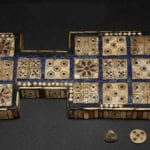 Movies and TV
Movies and TV  Movies and TV
Movies and TV  Creepy
Creepy 10 Eerie & Mysterious Ghosts of the Pacific Coast
 Weird Stuff
Weird Stuff 10 Typos That Accidentally Changed History
 History
History 10 Times Trickery Won Battles
 Technology
Technology 10 Awesome Upgrades to Common Household Items
 Misconceptions
Misconceptions 10 Hilarious (and Totally Wrong) Misconceptions About Childbirth
 Weird Stuff
Weird Stuff 10 Warning Labels That Exist Because Someone Actually Tried It
 Health
Health Ten Confounding New Inventions from the World of Biomedicine
 Creepy
Creepy 10 Death Superstitions That Will Give You the Creeps
 Movies and TV
Movies and TV 10 Movies That Get Elite Jobs Right, According to Experts
 Movies and TV
Movies and TV 10 Most Realistic Medical TV Shows of All Time
 Creepy
Creepy 10 Eerie & Mysterious Ghosts of the Pacific Coast
 Weird Stuff
Weird Stuff 10 Typos That Accidentally Changed History
Who's Behind Listverse?

Jamie Frater
Head Editor
Jamie founded Listverse due to an insatiable desire to share fascinating, obscure, and bizarre facts. He has been a guest speaker on numerous national radio and television stations and is a five time published author.
More About Us History
History 10 Times Trickery Won Battles
 Technology
Technology 10 Awesome Upgrades to Common Household Items
 Misconceptions
Misconceptions 10 Hilarious (and Totally Wrong) Misconceptions About Childbirth
 Weird Stuff
Weird Stuff 10 Warning Labels That Exist Because Someone Actually Tried It
 Health
Health Ten Confounding New Inventions from the World of Biomedicine
 Creepy
Creepy 10 Death Superstitions That Will Give You the Creeps
 Movies and TV
Movies and TV 10 Movies That Get Elite Jobs Right, According to Experts
10 Ridiculously Offensive Table-Top Games
What’s considered offensive is as elusive as attempting to hit a ripple in the water with a bow and arrow. What is funny for one person raises the hackles in another. Few other areas in our culture better illustrates this than in the games we play. We’ve explored the subject of offensive board games before, but the subject is far from exhausted. What’s more, this ignored other table-top contests such as card games. Here are 10 games that might bring a smile to some and ire to lots and lots and lots of others.
Related: Top 10 Deadliest Children’s Games
10 Is The Pope Catholic!?!
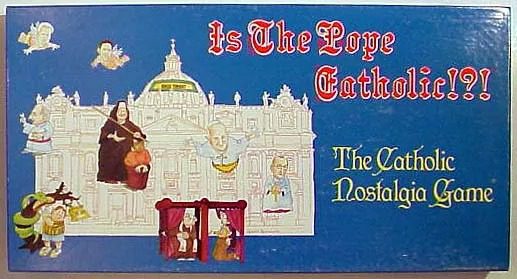
Advertised as a game of nostalgia for Catholics and non-Catholics who remember Catholicism before Vatican II (1962-1965) reshaped the church, Is the Pope Catholic!?! “takes a tongue-in-cheek look at the church when it was very rigid and contained a lot of do’s and dont’s,” said co-developer Richard Crowley. “We think it contributes to healing some painful memories of those days for Catholics.” Richard – along with his brother John – are Roman Catholic and they spent $50,000 and four years developing this game before its release in the mid-1980’s. Despite their efforts, they couldn’t help put fall into stereotypes that raised eyebrows in the older Catholic community.
Players roll die to progress along a route shaped like a rosary, acquiring chips that elevate the player from altar boy to priest to monsignor to bishop to cardinal and finally to pope. If they land on a sin rosary bead, they draw a card and lose a turn in the “box” or the confessional. For example, one card informs you that while returning from Holy Communion, the Host is stuck on the roof of your mouth. When no one is looking, you finger it free. God, however, is looking and you’re sent to the confessional. Other sins include using church money for candy or getting drunk on sacramental wine.
“Grace” beads – such as attending mass on minor holidays—provide an extra turn. If the player lands on a “Baltimore Bonus” bead, you must answer a question straight from the Baltimore Catechism before you can proceed. And if you land on a “Meet Me After School” bead, you draw a card with a surly nun holding a ruler, and you lose a turn as punishment for some school infraction. As a bonus, these cards also feature the names of real nuns who taught and tortured the Crowley brothers at St. Clement’s Grammar and High School in Boston.
9 12-21-12 (2013)
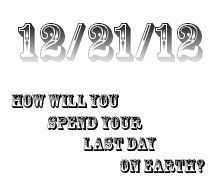
In 2013, a small game developer from St. Louis called Fishagon LLC published a card game named “12/21/12,” the date the Mayans supposedly predicted the world would end. Fishagon was launched – according to their Facebook page—by three friends who loved games in October 2012 just over two months before the Mayan apocalypse. And crude and offensive “jokes” appear to be the game’s selling point.
The game’s premise was to ask how the player would like to spend their “last day on Earth.” But instead of encouraging nobler, less-interesting final pursuits such as helping others or spending time with loved ones, points are given or taken from other players by describing how they’d tell off their boss, steal and joyride a car or explore pedophilia. “They say to live like it’s your last day alive… but you don’t. You know if you did you’d go to prison the following day,” says the product description. It adds: “Today, however, there is no tomorrow….Drink, Play Games, Murder, Masturbate, Hell you could even rape someone or give in to those temptations and go find a nice child to touch!”
8 BabeQuest (2003)
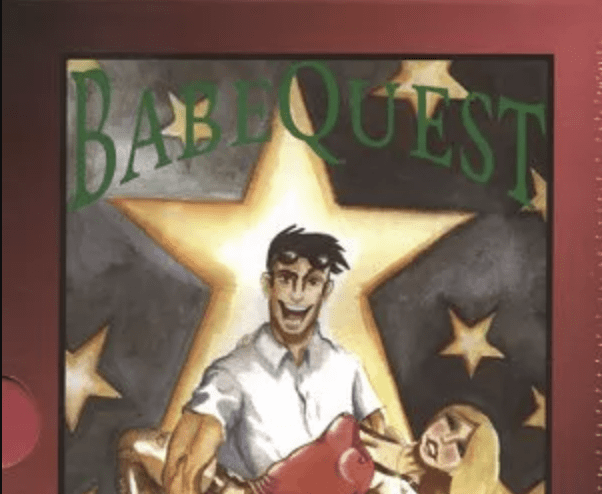
The table-top game “BabeQuest (2003)” – yes, adding the year is essential because it will not surprise anyone that a Goggle search will reveal some pretty lewd links – was published by the Danish developer Mads L. Brynnum and two of his friends. “It was a result of us not scoring enough, so instead of just drinking beers and complaining about our apparent lack of success with the opposite sex, we decided to make a card game about getting laid,” Brynnum posted.
The premise is not surprising: the player who “scores” the most babes wins the game. There are 14 cards representing “hunting grounds” and 28 cards representing potential prey. The players (in both senses of the name) roll dice to see if their approaches to a woman are successful and they can increase their odds with cards that ply them with alcohol, or catch their attention with a nice car or leisure suit. The other players can utilize cards that can sabotage the approach with things like a lame pick up line. One example of a babe card is that of The Blonde: “She is found everywhere and has an IQ that is inversely proportional to her breast size. She falls for the oldest tricks in the book.” It even adds an “actual blonde quote” which reads: “The sound barrier? I’ve heard of it—isn’t it the one in China?”
7 Twinkies and Trolls (1983)
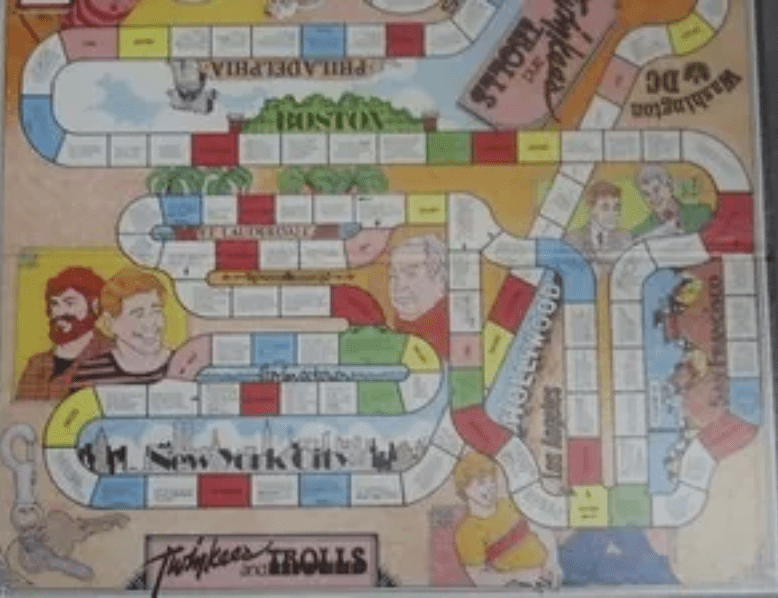
Along similar lines as BabeQuest, Twinkies and Trolls was published in 1983 by the owners of the gay bar “Buddies” in Boston. The inventors described the game as a “lighthearted reflection of gay life and the gay lifestyle.” Inspired by Hasbro’s The Game of Life, players start from a closet and visit their first gay bar, and “baths” in New York, San Francisco, Provincetown and Ft. Lauderdale, collecting trolls (gay slang for old, ugly men) and twinkies (young, attractive men). The player with most of the latter wins.
The game is famous for its stereotypical and offensive situations it portrays both on the board spaces and on the situation cards, most of which cannot be repeated here. One of the tamer cards reads: wealthy sugar daddy takes you to Puerto Rico for a month, collect $10,000 spending money but lose one turn. Another reads: caught with a cute hustler by your lover, receive three troll cards. One space on the board reads: your favorite “glory hole” is nailed shut, lose 15 points. Another reads that after a lonely, depressing night at home, you eat your chocolate dildo and lose 15 points.
6 The Jolly Darkie Target Game (1890)
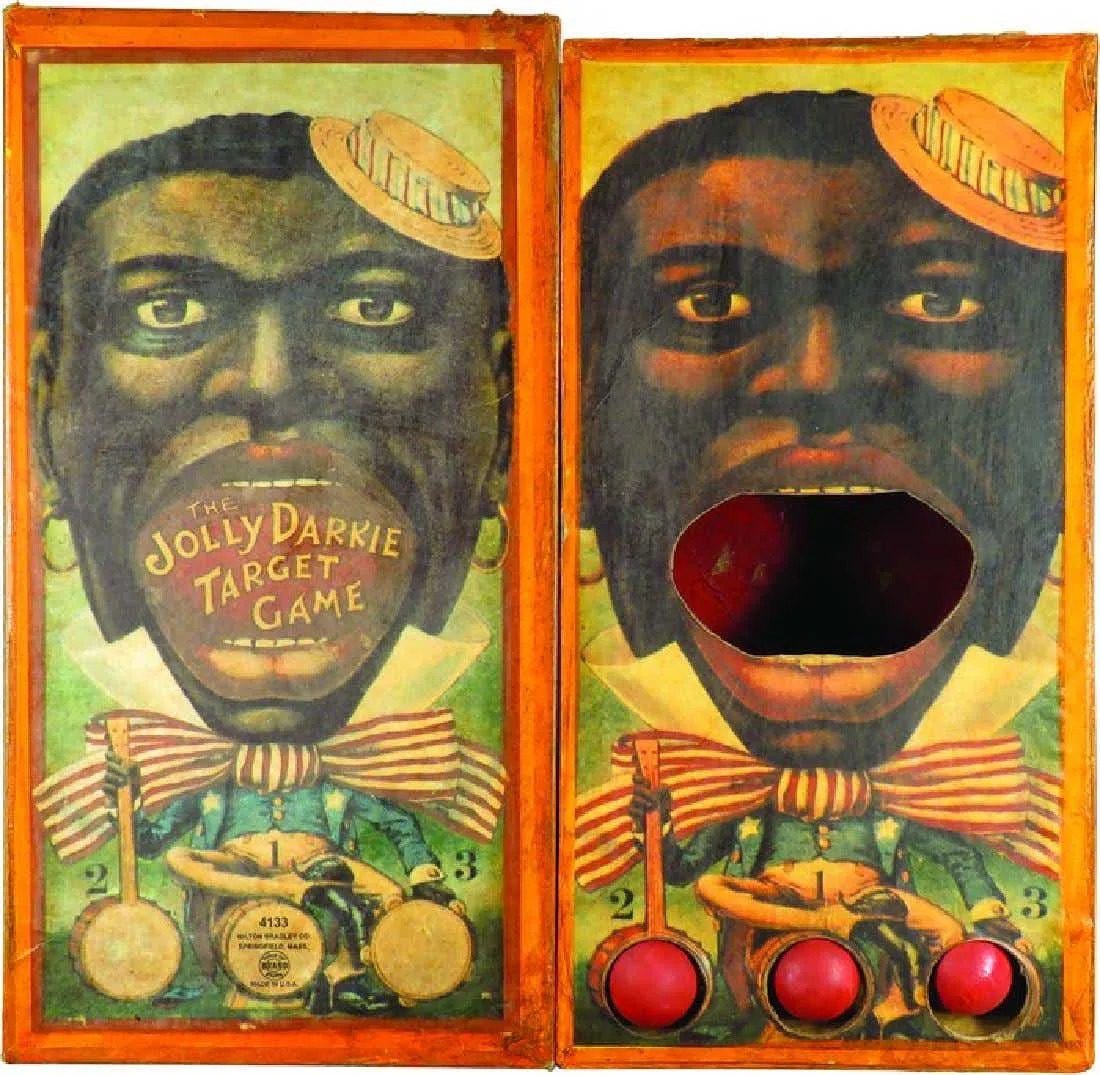
In September of 1881, a carnival promoter in Indiana came up with the idea of chaining a monkey to a table and allowing people to throw balls at it for a couple of pennies. The universal outrage that followed forced the promotor to close down his game. Undeterred, he painted a jungle scene on a bed sheet stretched between two poles with a hole in the center. He hired a black man to stick his head through the hole and anyone who paid could throw baseballs at his head. The game, known as “The African Dodger” and later as “Hit the Coon” or “N— in the Hole,” became a nationwide sensation. Carnivals and fairs all over the country had their own versions and not just in the South.
An August 30, 1888, Nebraska State Journal article described the game at a local fair, the barker shouting: “Here you are gentlemen; three balls for five cents or six for ten cents. Come now, kill the coon; kill him I say! Hit his head once and you get one cigar, twice and you get two cigars, three times and you get a half dollar.” The anonymous writer then described how two youths broke the rules and threw their first baseballs at the same time: “one ball caught the darky on the ear, the other on the top of the head… [the African-American] became so confused that he didn’t know enough to take his head out of the hole. Each threw their remaining five balls in rapid succession, and while some of them missed,… enough of them hit him to give him a swelled eye and the [blood] began to flow. You should have heard the crowd shout. How they did cheer!”
Worse injuries incurred when an amateur or pro baseball player tried their hand at the game. In South Dakota in 1908 a pro knocked a man’s teeth out. In 1898 several Chicago pros took turns throwing at William Kelley’s head, sending him to the hospital, “his face was like a puff ball and that his eyes were badly swollen.” Inevitably there were deaths. There were two within a week of each other in 1924 in New Jersey, one in Hackensack, the other in Elizabeth.
It’s not hard to see similarities between the violence of “African Dodger” to other violence perpetrated against African-Americans. Even at the time, people noticed. In a 1913 Indiana Evening News editorial, one writer equated the excitement generated by hurting the dodger to lynch mob mentality. “The impulse to hit the darky is akin to that which creates the blood lust in the mob.” Historians claim that between 1882 and 1968 there were more than 3,440 lynchings in America were recorded, the approximate time “The African Dodger” was popular.
Eventually “The African Dodger” was made into a table-top game for home use, complete with the head of an African American that rang a bell every time it was struck with the ball. It was one of many target games published in this era. Parker Brothers produced “The Game of Sambo” in the early 20th century which featured African-American caricatures to be targeted. “Bean-em” was a beanbag target game with black figures. Then there’s The Jolly Darkie Target Game. Published in 1890 by McLoughlin Brothers (later merged with Milton Bradley Company), the Jolly Darkie is played on one end of the table, with the players on the other end. Players get a point if their ball lands in the darkie’s grinning mouth, and the ball will roll out one of three holes at the bottom, giving the player extra points assigned to each hole.
5 Kill the Hippies (2007)
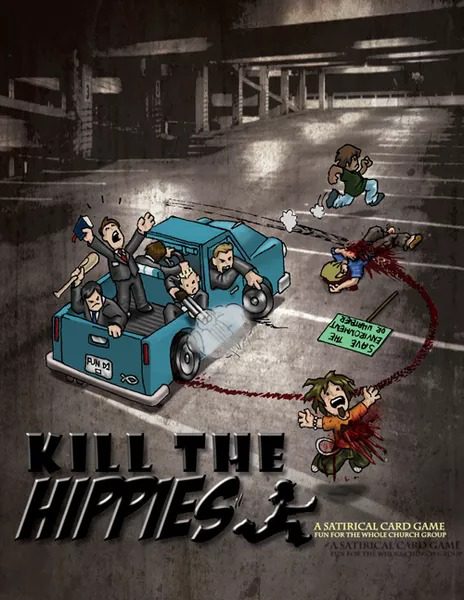
Published in 2007 by Golden Laurel Entertainment, participants, according to the product description, are “members of the fanatical right” or “fundies” (fundamentalist Christians) “in their Holy Crusade to rid the world of those dirty hippies.” Billed as a satirical card game that is “fun for the whole church group,” players decide from the outset the winning number of points, deriving them from either killing a hippie or converting them.
There are two decks of cards, the smaller deck containing 15 hippie cards from which five or more are drawn. Examples of the hippies portrayed on these cards are the Faerie Wicca Girl, the Shaman Tree Hugger, the Spirit Guide Channeler, and the Flower Child. One hippie card shows an amputee in a wheelchair, titled “Disabled Vietnam Vet,” with instructions at the bottom saying they can be “converted instantly” if the fundie uses alcohol. At the bottom of each card is a quote that may or may not be relevant to the hippie. For instance, the Faerie Wicca Girl’s card has an unattributed quote: “Girls are like parking spaces… The good ones are taken and the rest are handicapped.” At the bottom of the Folkie card is a quote from John Lennon: “We’re more popular than Jesus now; I don’t know which will go first – rock and roll or Christianity.”
The other deck has “Deeds,” “Relics,” and “Events” cards in them. An example of a Deed card is one titled “Favorite Televangelist on TV” and shows a man in a chair watching television with a woman performing a sex act on him while he balances a beer can on her head. The Fundie loses their turn if they draw that card. The Deed card “Accusation of Sexual Deviance” shows a naked man putting lipstick on, a radio playing music in the background with a pack of cigarettes on the chair. The player who receives this card can take a kill and a convert from another player.
Relics cards are used to either convert or kill the hippie. One example has a woman with her clothes ripped and her panties lying beside her and kneeling before a baptismal dubbed the “Font of Revirginization.” Three points can be used to convert a hippie, 1 point for killing them. Other relics include the “Lighter of Purification” (a cigarette lighter with a cross on its side used on a hippie drenched in gasoline); the “Rosary of Saint Garrotte (sic)” (rosary used as a garrote); the “Hymn Book Holster” (pistol and silencer in hymnal with fitted slots); and a “Hillbilly Exorcism” (two hillbillies restraining a hippie, one unbuckling his pants, an overt reference to the movie Deliverance) Another card, titled “Compound Bow,” shows Jesus with said weapon, standing atop a pile of corpses with arrows protruding from them. At the bottom is a quote of Jesus (out of context) from Matthew 10:34: “I did not come to bring peace, but a sword.”
Event cards change the rules temporarily or through out the game. For instance, one card called “Suburban Upbringing,” remains in play one entire round, adding one point for every conversion or killing of a hippie. The illustration on the card shows a house with a couple sitting on a porch swing, an abandoned car in the yard and their kids with Ku Klux Klan hoods.
The creators of the game seem a bit sensitive to criticism, because they devoted space in their instructions to the following: “If you do not see the humour (sic) in this game, watch South Park, Family Guy, or The Colbert Report – this is called satire, this is called irony. Read Jonathan Swift’s Gulliver’s Travels, A Modest Proposal; read some Oscar Wilde, pick-up a f-ing book. Get educated.” Their admonishment is actually an example of irony since there are misspellings in their product (or at least alternate, archaic spellings), misleading quotes and they equate irony with satire. Not the same.
4 Pain Doctors: The Game of Recreational Surgery (1996)

Based on his book The Pain Doctors of Suture Self General, Alan M. Clark collaborated on the artwork for this game. Clark is famous in the horror community for his dark, twisted illustrations, winning the World Fantasy Award, and his work has won multiple Chelsey Awards and Locus and International Horror Guild nominations. Many purchased the game to collect Clark’s artwork.
In “Pain Doctors,” the players are surgeons operating in “The Facility,” attempting to perform procedures on patients who are not even healthy enough to survive surgery. While each crazy surgeon does everything they can to increase the health of their patient, opponents do the opposite, going so far as to kill the patient. Each player is dealt three patients, already grotesquely deformed by previous recreational surgeries. For instance, one patient is named John Austentatous who looks more like a store mannequin than a human with a brief caption that reads: “John used to surf the net. Now he does well to roll on a gurney.” And Martha Ewing, “a federal agent” who came to the Facility to investigate fraud, but was “convinced” to stay, is shown as a patient with goo running out of her eye sockets.
Each patient starts with 5 life points and is assigned to a ward, either “addicts,” “geeks,” or “Batty.” Each player also received 4 treatment cards. These cards lift or lower the health of patients. For instance one card delivers a letter from Mom, raising the patient’s life points by 5. Another card reads that a nurse forgot to wash their hands, spreading a staph infection. The illustration is of a pair hands with grotesque, green spores growing on them. Problems with cannibalistic orderlies, nurses who use IV bottles as ashtrays , and staff who steal drugs are also hazards. Some treatment cards are not really treatments at all. One of these cards has a limp hand, the index finger extended with a pistol hanging from it via the trigger guard. The caption says “who left the pistol in the ward? Unfortunately your patient choses the easy way out.” That patient is removed completely from play, resulting in all their points lost.
Once a patient has reached 10 or more life points, he or she is moved to pre-op. But even there, they are not safe. If an opponent draws the “kidnap” card, it reads: “seeing an opportunity, you grab a [another player’s] pre-op patient and run into surgery! You weren’t seen, so you can do what you want.” Once the player feels his patient has sufficient life points, the patient can move into the operating suite and the player draws surgery cards that can throw a wrench in the procedure. One card says “the patient has been awake for the entire operation so far! You can thank the anesthesiologist for hoarding the ether.” Another says that a baboon’s arm is the only limb replacement available. Another proclaims that a staff member, “preparing for the faculty talent show,” jumps onto the patient’s chest and begins dancing. Once the patient reaches zero life points, they die on the table.
3 Who’s Your Daddy? (2001)
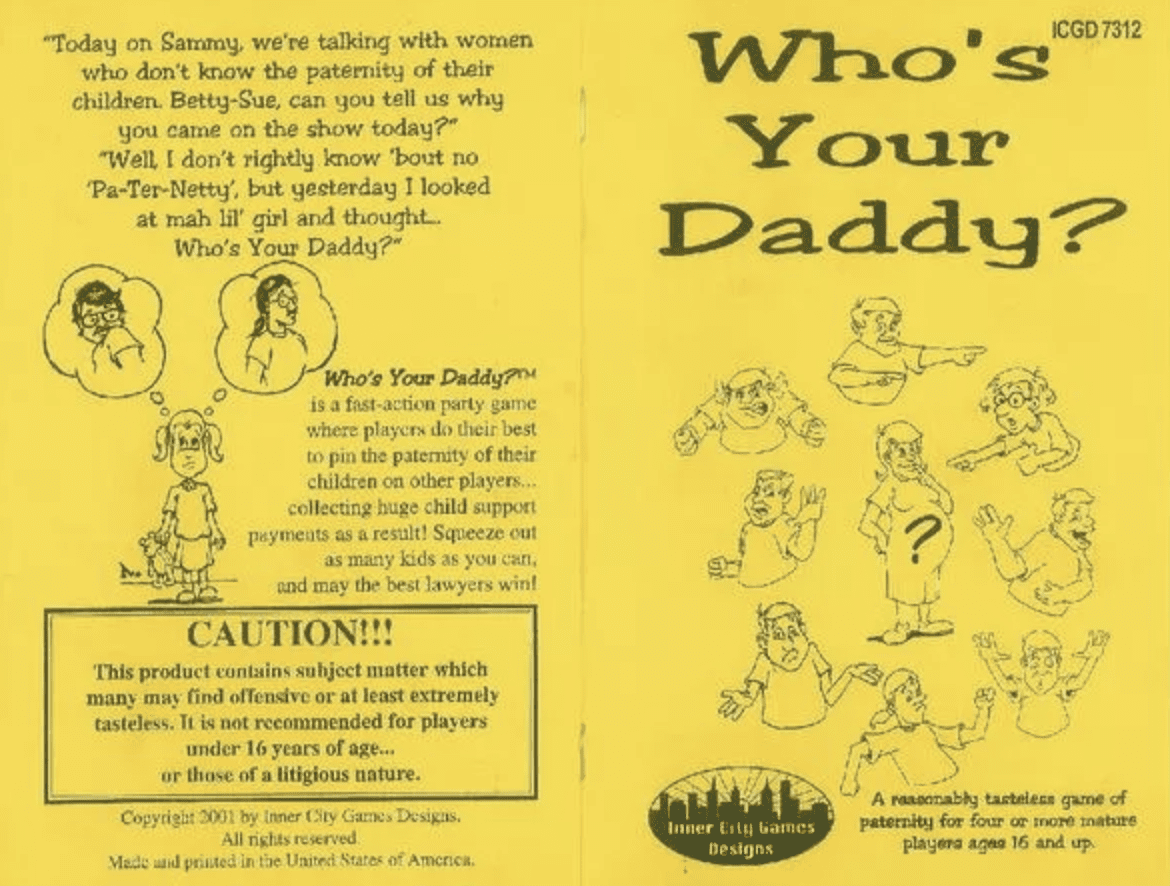
Not to be mistaken for the video game of the same name released by Evil Tortilla Games in 2016, this 2001 table-top game is reminiscent of the Maury Povich or Jerry Springer shows. Participants play both as a man and a woman in this game. As the woman, the player tries to have as many children with as many of the other player’s men as possible, and successfully sue those men for paternity payment or payments. As the man, the player denies paternity and does everything they can to avoid paying. The player who still has money wins the game.
Each player starts the game by creating the physical attributes of both their man and woman (hair color, eye color, etc.) in order to compare DNA attributes. Each player’s woman has a child, gives them a name and rolls a die to see what physical attributes the child has. They also roll the die to determine if the child has a “special trait” which is to say “special needs.” Those “special traits” of course elevates the amount of money the woman can ask the daddy. At the beginning of each round, the players collect paternity payments, then either get pregnant, give birth or accuse another player of paternity. The woman, when she accuses paternity, also demands compensation. There are no limits to what she can ask for (with the exception that she cannot give the child to the accused). Payment can be a lump sum or a payment with each round. The accused can accept the demanded payment, can make a counter-offer, or deny paternity. If paternity is denied, the accused can accuse another player’s male character of paternity or take a paternity test (the results determined by the roll of a die). The mother pays for the paternity test and if she loses, and she must wait until the next round to make another accusation.
2 Ghettopoly (2003)
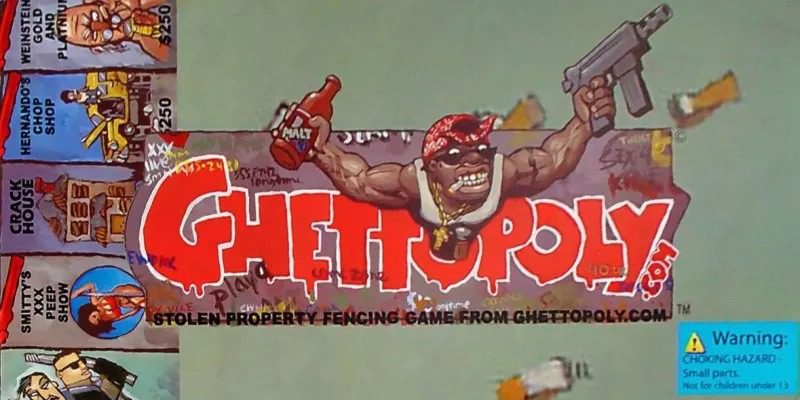
Developed by David T. Chang in 2003, this parody game has so many obvious similarities to Monopoly, it was inevitable Hasbro would sue. Designed in a square, the properties have names like “Trailer Trash Court,” and “Cheap Tricks Ave.” (with an illustration of prostitutes showing off their wares). If a “playa” runs out of money, they don’t go bankrupt or to jail, but a loan shark puts them in the hospital. Instead of 4 railroads, there are 4 liquor stores. Instead of paying when a player lands on the “Taxes” spaces, they pay when they land on “Car Jacked” and “Police shake-down” spaces. In lieu of the Water and Electric Companies, there are crack house and pawn shop spaces where players pay a “protection fee.” In place of “Chance” and “Community Chest” cards, there are “Ghetto Stash” and “Hustle” cards. Instead of building houses and hotels, you build crack houses and projects.
There are some obvious racial and ethnic slurs. For instance, the massage parlor is owned by “Ling Ling,” the chop shop by Hernando, and the pawn shop by Weinstein. On one of the Ghetto Stash cards, it reads “you robbed a stupid Japanese tourist, collect $200” with an illustration of said victim saying “Are you lobbing me?” In response to the criticism, Chang said the game “draws on stereotypes not as a means to degrade, but as a medium to bring [people] together in laughter. If we can’t laugh at ourselves… we’ll continue to live in blame and bitterness.” The NAACP and a number black clergy were particularly outraged by properties such as “Martin Luthor King Jr. Boulevard” and “Malcum X Avenue” (deliberately misspelled) with caricatures of both men. “This is beyond making fun, to use the caricature of Dr. King in this regard,” responded Rev. Glenn Wilson, a Philadelphia Baptist minister. “There’s no way that game could be taken in any way other than that this man had racist intent in marketing it.”
A short time after its release, Urban Outfitters pulled the game from its shelves and Yahoo! and eBay halted on-line sales. In October 2003, Hasbro sued Chang for violating its trademarks and copyrights and caused “irreparable injury” to Hasbro’s reputation. Chang lost the case by default.
1 Capital Punishment (1981)
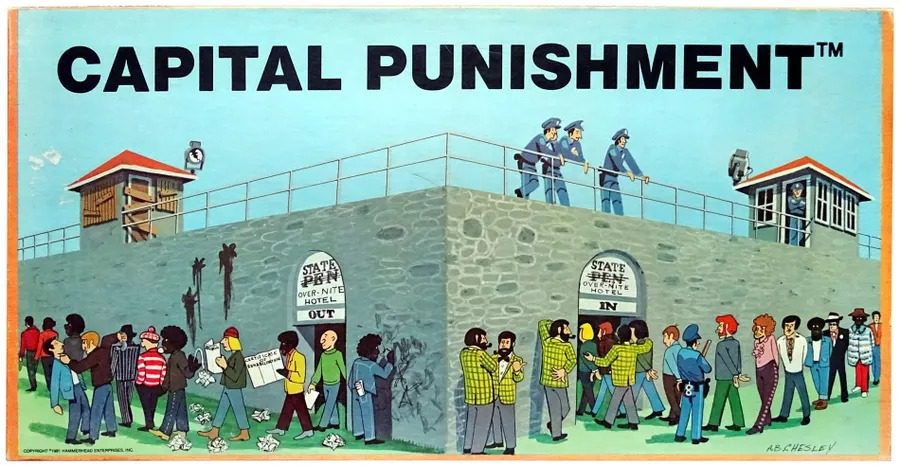
In 1980, friends Bob Johnson and Ron Pramschufer developed and published a controversial board game called Public Assistance. In the game, a working person is pitted against a welfare recipient, the former receiving a $150 monthly paycheck with tiny pay raises while the latter receiving $500 monthly benefits that increase with each child they have. They may “hit a sub shop” and collect $50, perform a sexual favor for a cop and collect $300, or loot stores during a snow storm and receive $2,000. Some 135,000 copies of the game flew off store shelves until the NAACP, the National Organization for Women, and state and city human resource departments stopped the sale of the game. When asked about the popularity of his game, Johnson said “The public is frustrated over the government spending and spending.” He added “People ask, ‘How did you invent the games?’ I say, ‘We didn’t. Government liberals did. We just put it in a box.’ “.
A year later, Johnson and Pramschufer published Capital Punishment, this time taking aim at the American legal system. Each player is given 4 criminals – a murderer, rapist, arsonist, and kidnapper – and the object of the game is to get all 4 either life imprisonment, placed on death row or executed. Each criminal can only be apprehended if they roll a 7, 11 or doubles. Each player also gets 2 liberals who start the game in their ivory tower and are sent to spring opposing criminals from the judicial system and those criminals have to start anew. Each player is also given 15 innocent civilians and when criminals are put back on the street, their civilians are also killed and sent to heaven. Any player who loses all their civilians automatically loses the game. If however a player wants to continue, they may sacrifice one or both their liberals changing them to civilians and ultimately to victims. Clearly the creators had an axe to grind which may explain why Capital Punishment, too, was allegedly banned.
